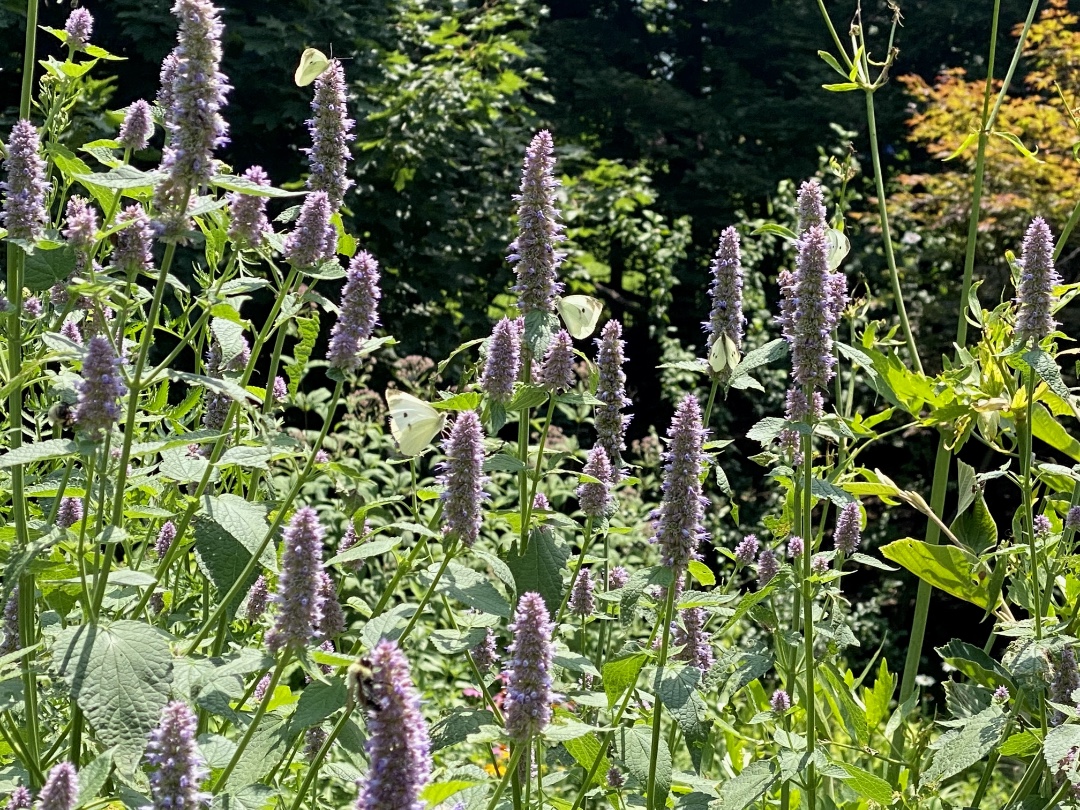
Supporting Pollinators, Yourself, and Your Ecological Community with Anise Hyssop
By Gayil Nalls
Sign up for our monthly newsletter!
As a gardener I know how important insects are to nature and I’m also well aware that many beneficial insect species are in dangerous decline. So, in the past few years, in addition to my other conservation projects, I have taken on the challenge to make my property as supportive as possible to local insects with pollinator friendly plants for spring, summer and fall.
One of the biggest draws by far has been the giant fragrant anise hyssop (Agastache foeniculum), a perennial in the mint family and North American native.
I have created several new plant beds of native plants and wildflowers and enlarged my medicinal and herb garden. I’m happy to say that this summer these additions provided pollen and nectar for a huge variety of insects. Besides the many species of bees and butterflies, there were insect species I’ve seldom seen over the years and even ones I’ve never seen before.
One of the biggest draws by far has been the giant fragrant anise hyssop (Agastache foeniculum), a perennial in the mint family and North American native. (Despite its name, it is not related to either the European healing herb hyssop or to anise.) However, the plant’s aromatic leaves do smell and taste pleasantly like licorice or anise but with more floral sweetness.
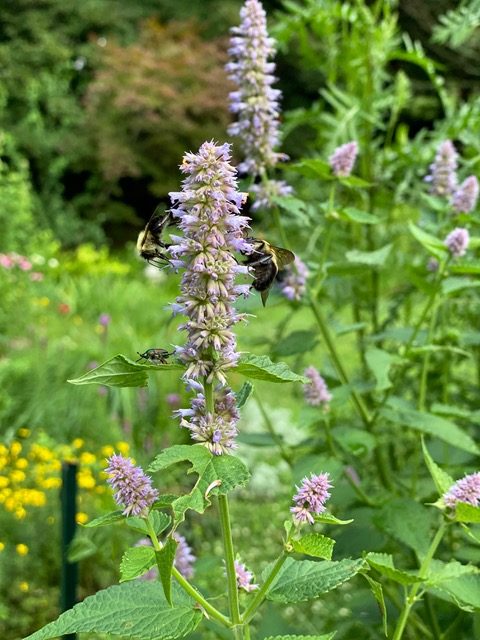
It’s wonderful to surround yourself with healing plants. The leaves of Anise Hyssop can be harvested anytime, however they are highest in essential oil just as the lavender edible flower spikes are winding down, so now through Fall is a great time to harvest the leaves for culinary and medicinal use. Pick them in the morning after the dew has dried and before the sun starts evaporating the essential oils. You can add the fresh leaves to summer salads, vegetable pastas and soups, and use them to flavor jams and marinades. Dry the leaves for year-round use as tea or infusions. The flowers also make a beautiful edible garnish for iced teas and mixed drinks and the seeds, loved by birds in the fall, can be used in baked goods.
The plant has a long history of medicinal use with indigenous tribes of the US, especially Cheyenne and Chippewa, and with early Americans. It continues to be used as an expectorant to treat respiratory infections and fevers. Due to its antibacterial qualities, it is also used in salves to treat wounds and infections.
large colorful swallowtail butterflies, a few monarchs, and a happy, playful group of cabbage white butterflies have constantly danced around the plant
The flowers are highly attractive to many pollinators that work the columns of dense little tubular flowers, and because of this, the plant became an endless source of fascination and entertainment this summer. I ending up learning new things about bug routines, community and territory by observing the flowers buzzing with so many species of bees and watching them work each individual florets by day with some species sleeping on the flowers at night. Several different species of butterflies, including large colorful swallowtail butterflies, a few monarchs, and a happy, playful group of cabbage white butterflies have constantly danced around the plant, and there have been visits from moths, flies, and humming-bird hawk moths. Much to our delight, colorful and fast-moving ruby-throated hummingbirds regularly visited, loving this great supply of nectar. I have to say, trying to create a healthy landscape to help prevent ecological collapse has also made my family happier.
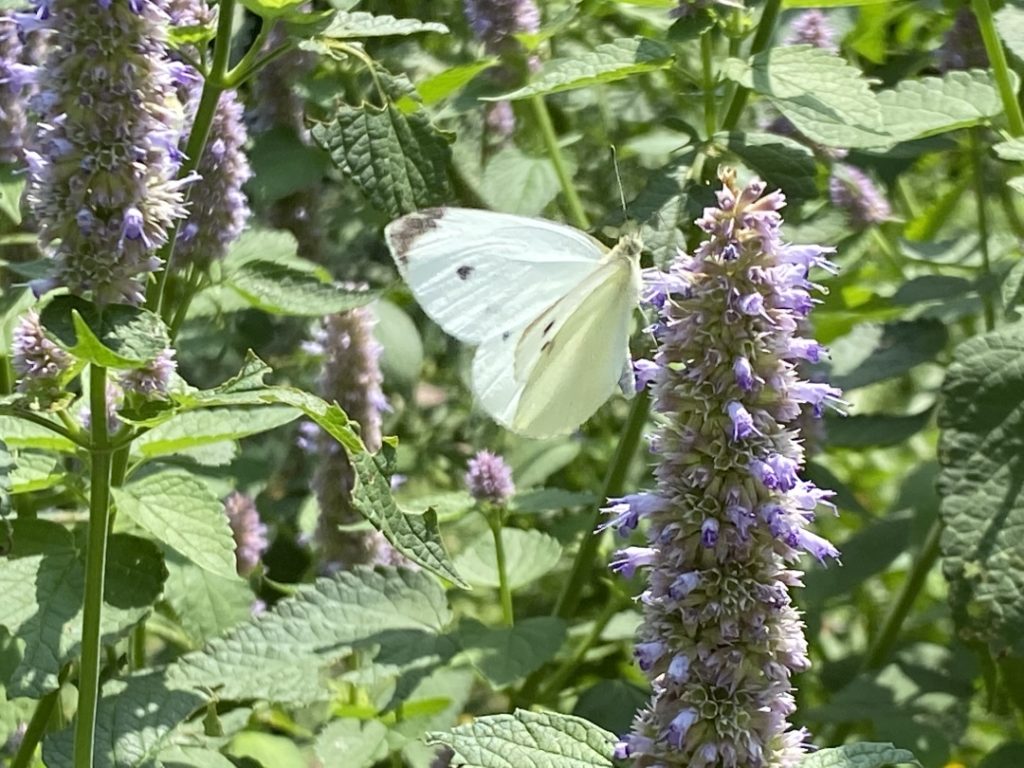
I have to say, trying to create a healthy landscape to help prevent ecological collapse has also made my family happier.
If you want to know more about how to use your property to effectively make a holistic difference for your community of life, in all its sizes, I highly recommend Doug Tallamy’s book Nature’s Best Hope: A New Approach to conservation That Starts in Your Yard. This book will be a wonderful help to your own backyard conservation projects.
Gayil Nalls, PhD, is the creator of World Sensorium and founder of the World Sensorium/Conservancy

As Ireland transitions from the rich, smoky scent of peat-burning to a more sustainable future, its olfactory heritage is evolving. What will become the next iconic aromatic symbol of Ireland?
Click to watch the documentary trailer.


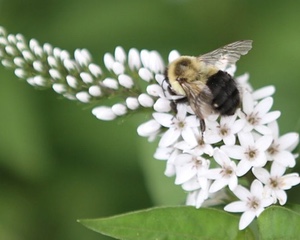
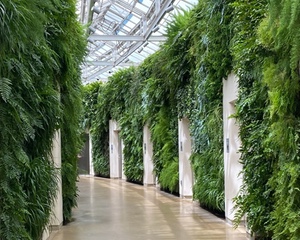
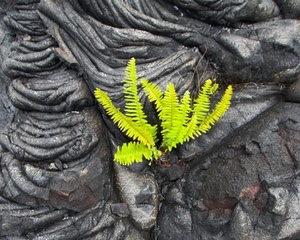
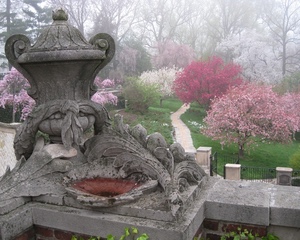
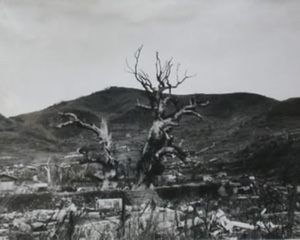
Love to plant some next year. Save me some seeds Gayil. I have a plant that resembles it but not sure. Will take a photo for you. Sounds like you had a great garden summer.
Thank you for this contribution! I mistakenly identified this hyssop plant for a type of salvia. I saw it in a local community garden and was amazed by the number of bees attracted to it..
I will plant it generously for our community bees.